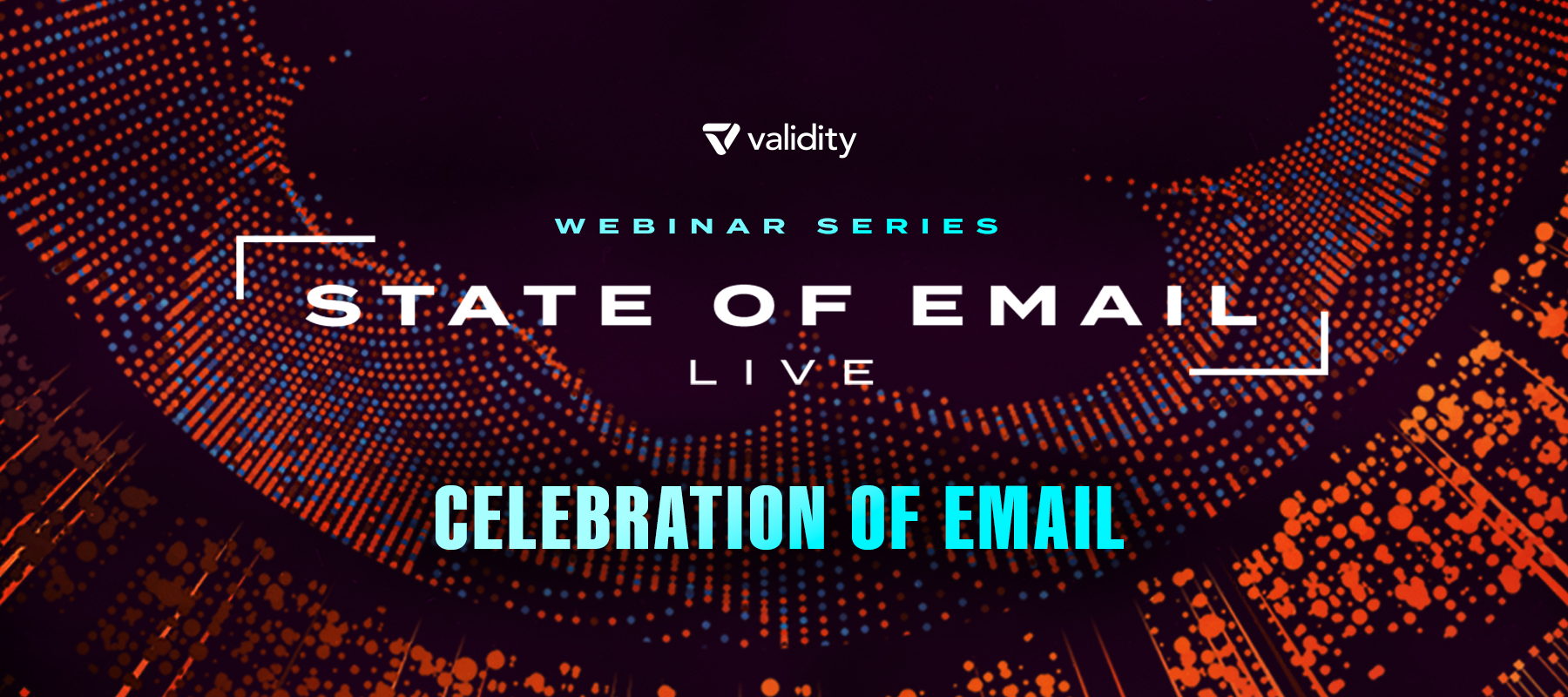
Our latest State of Email Live webinar featured a stellar lineup of guests, including Mary Wellen from the Wildlife Conservation Society, Magnus Eén from Westwing, and Validity’s own Rafael Viana.
Black Friday recap
To begin, Rafael provided fresh insights into email performance on Black Friday:
- Email sending volumes were 70 percent above the year-to-date daily average, even higher than the 66 percent uplift we saw last year.
- Since September, global open rates have risen following the introduction of Apple’s Mail Privacy Protection (MPP). But on Black Friday, we saw a sharp decrease in open and click rates.
- However, the increased email volume meant that total website traffic from the email channel was still considerably greater.
It wasn’t all good news though—Black Friday unsubscribe rates reached 0.2 percent, more than double the 0.09 percent YTD average. This shows the importance of limiting subscriber fatigue when sending email campaigns.
Fifty years of email
This year, email celebrated its 50th birthday.
It all began back in 1971, when Ray Tomlinson sent the first email saying, “Test 123.” Since then, email has become the preferred communication channel for marketers and consumers, scoring highly for trust and relevance with consumers, and for measurability and ROI with marketers.
But there are always new challenges, even for tried-and-true communication channels like email. This year was no exception: The BBC released a report on spy pixels in email, Apple introduced Mail Privacy Protection (MPP) in June (“Pixelgeddon!”), Apollo acquired Yahoo and AOL for approximately five billion dollars, and COP26 sparked new concerns about email’s carbon footprint.
As we approach Christmas, supply chain disruption remains a major concern. Email will have a key role to play in a “Don’t wait, communicate” brand strategy. Wish lists, back-in-stock communications, and proactive outreach about delivery dates will be valuable tools to help brands manage their customers’ expectations.
Q&A: A celebration of email with Mary and Magnus
Our birthday festivities included a broad-ranging Q&A session with our guest speakers.
They shared why they love email, their most successful email campaigns (and disasters!), their favorite email technology, and their predictions for email in 2022.
Read on for a preview of our Q&A with Mary and Magnus.
Why do you love email?
Mary: As an email marketer, you need to wear creative and analytical hats, so the work and challenges are always different. Email is thoughtful, strategic, and analytical. It’s also the most personal form of communication with your supporters. They’ve asked to hear from you. Email is a unique opportunity to engage them and encourage them to stay loyal to your brand.
Magnus: Love is sometimes hard to explain—but I’ll try. I love email for its simplicity, constant evolution, great community, and excitement. Email has become core to online identity. As such, it presents a great opportunity for online businesses—if it’s done right.
What’s your favorite piece of email technology?
Mary: Everest. I use the dashboards every week, and I love the alert feature because you can set it and forget about it, knowing you’ll hear if there is a problem.
Apart from Everest, I’ve used several email systems over the years. Salesforce Marketing Cloud makes data retrieval and email automation easy. There are also lots of cool features like Contact Builder and Einstein that make it possible to analyze subscribers at a micro and macro level.
Magnus: I’d have to say AMP for email. I think AMP has huge potential to make email more useful and interactive. I also love Postfix, which first piqued my interest in email and made me more aware of how things worked. Finally, Excel for visualizing data to monitor discovery and help guide decisions regarding email programs.
How is Apple MPP affecting your email program?
Mary: We’ve definitely seen inflated open rates, so we’re relying less on that as a metric and focusing more on click rates, unsubscribes, and conversion rates. It’s made us realize open rates aren’t that important—clicks and revenue are our most important KPIs. We’ve had to change some of our trigger emails to become click-based instead of open-based.
Magnus: We can no longer trust the open signal. We’ve adjusted our segmentation to be more flexible. We don’t include open signals in the calculation, but this might change. People are still waiting to see the true impact of MPP.
What are your email predictions for 2022? What’s the next big thing we’ll see?
Mary: More email! Email was our shining star on Giving Tuesday, especially in terms of revenue and engagement. While all other channels were flat, email was up 33 percent year-over-year. We’ll also see AI in terms of inbox placement and personalization. Using Validity, we can already leverage AI for email deliverability based on user behavior, and I think capabilities like this will continue to expand.
Additionally, we’ll see more drive for increased personalization and content based on preferences and engagement.
Magnus: Email won’t go away anytime soon. Since I started, I’ve heard plenty of predictions about email dying because of SMS and Facebook messages—but it hasn’t happened yet.
Senders will still use open rate data, just maybe not how they did previously. Email privacy will remain an important topic. User-generated content (UGC) has the potential to boost email programs by promoting diversity and sustainability. In short, email will remain more relevant than ever.
To hear more insights from Mary and Magnus, watch the full webinar here.